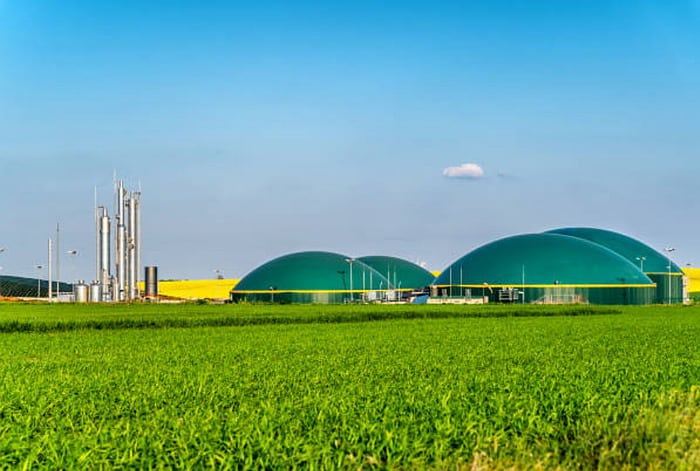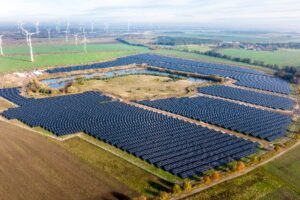Pros And Cons Of Biomethane

The global transition toward sustainable and eco-friendly energy sources has led to the exploration of innovative solutions to meet our energy needs while reducing our environmental footprint. Biomethane, a renewable natural gas produced from organic materials, has emerged as a promising green energy alternative. This article delves into the pros and cons of biomethane, shedding light on its potential benefits and challenges.
Pros of Biomethane
1. Renewable Energy Source
Biomethane is derived from organic materials, such as agricultural residues, food waste, sewage sludge, and other organic materials. This organic origin makes it a sustainable and renewable energy source that can be continually produced as long as there are people, animals and organic feedstocks available on the planet.
2. Greenhouse Gas Reduction
Biomethane production involves capturing and utilizing methane, a potent greenhouse gas produced during the decomposition of organic matter. By preventing methane release into the atmosphere, biomethane production facilities significantly reduce greenhouse gas emissions and their impact on the environment, which prevents climate change.
3. Energy Independence
Biomethane production can be localized, reducing dependence on fossil fuels and promoting energy independence at regional or national levels. This contributes to greater energy security and stability in the region.
4. Effective Waste Management
One of the most significant advantages of biomethane production is its role in waste management. It offers an efficient solution for treating and recycling organic waste, diverting it from landfills and incineration. This not only reduces the environmental impact of waste disposal but also produces valuable energy, which is also renewable.
5. Distributed Energy Generation
Biomethane facilities can be established on a smaller scale, allowing for distributed energy generation. This decentralization is particularly beneficial for remote areas and can reduce energy losses during long-distance transmission of power.
Cons of Biomethane
1. High Initial Investment
The establishment of biomethane production facilities, such as anaerobic digesters, requires a substantial upfront investment. This initial cost can be a barrier to entry for some organizations and even regions.

Huge digesters for biomethane production, image source: Unsplash
2. Feedstock Availability
Biomethane production relies on a consistent supply of organic feedstocks. In some areas, where we don’t have a sufficiently large number of people or animals, obtaining a reliable and sufficient source of feedstock can be a challenge, potentially limiting the production capacity of the biomethane production facility.
3. Methane Leakage
Despite its eco-friendly nature, there is still a risk of methane leakage during biomethane production and transportation. Methane is a potent greenhouse gas, because is 25 times more potent than carbon dioxide at trapping heat in the atmosphere. This means that any emissions can offset the environmental benefits of biomethane.
4. Energy-Intensive Purification
Achieving the high purity required for biomethane often involves an energy-intensive purification process. This consumes power and can increase the carbon footprint of the biomethane production facility.
5. Competition with Food Production
Some biomethane feedstocks, such as corn and other crops, can compete with food production. This raises concerns about resource allocation and the potential impact on food prices.
6. Limited Infrastructure
Biomethane infrastructure, including refueling stations for biomethane-powered vehicles, may be limited in some remote regions. This can hinder the widespread adoption of biomethane as a transportation fuel.
7. Limited Energy Density
Biomethane has a lower energy density compared to fossil fuels. As a result, larger storage and transportation infrastructure may be required to deliver the same energy content. This limitation can increase operational costs.
8. Digestion Process Challenges
Biomethane production involves anaerobic digestion, a biological process that can be sensitive to temperature fluctuations and feedstock composition. Maintaining stable conditions for optimal biomethane production can be a challenging task especially in very cold areas.
Biomethane Applications
1. Industrial Processes
Biomethane can be used as a source of energy for various industrial processes, such as heating, cooling, and steam generation for clean electricity production. This versatile application can help industries reduce their carbon footprint and reliance on the dirty fossil fuels.
2. Feedstock for Chemicals and Fuels
Biomethane can serve as a valuable feedstock for the production of chemicals and advanced biofuels. It can be used as a precursor for the synthesis of bioplastics, bio-based chemicals, and sustainable biofuels, reducing the dependence on petrochemicals.
3. Heating for Residential and Commercial Buildings
Biomethane can be utilized for space heating in residential and commercial buildings. This application is particularly effective in regions with access to a biomethane supply network, providing a green and efficient heating solution. Of course that some of us are using it at home for cooking.
4. Grid Injection and Electricity Generation
Biomethane can be injected into natural gas grids, allowing it to reach a wide range of end-users. This includes residential and industrial consumers who can use it for heating, electricity generation, and other applications. Biomethane can also be used in gas-fired power plants to generate electricity, contributing to a cleaner energy mix.
5. Marine and Aviation Fuels
Biomethane has the potential to replace conventional fossil fuels in marine and aviation applications. Biomethane-powered ships and aircraft offer a greener alternative for the transportation sector, reducing emissions and environmental impact.
6. Agricultural Use
In agricultural settings, biomethane can be used to power machinery, such as tractors and harvesters, providing a sustainable energy source for farming operations. It can also be used for on-farm heating and electricity generation.

Biomethane production facility in the UK, image source: Unsplash
7. Export as Compressed Natural Gas (CNG) or Liquefied Natural Gas (LNG)
Biomethane can be compressed or liquefied for export. This allows regions with excess biomethane production to supply other areas, contributing to a broader adoption of this renewable energy source.
8. Emergency Power Generation
Biomethane can serve as a reliable source of backup power generation during emergencies, such as natural disasters or grid failures. Biogas generators fueled by biomethane can provide essential electricity when needed most.
Conclusion
In conclusion, biomethane holds the promise of a sustainable and environmentally friendly energy source with significant advantages, including greenhouse gas reduction and effective waste management. However, challenges related to infrastructure, feedstock availability, and initial investment must be addressed to fully unlock its potential as a green energy alternative. As the world continues to seek cleaner and more sustainable energy solutions, biomethane stands out as a compelling option with the potential to play a vital role in our renewable energy landscape.







